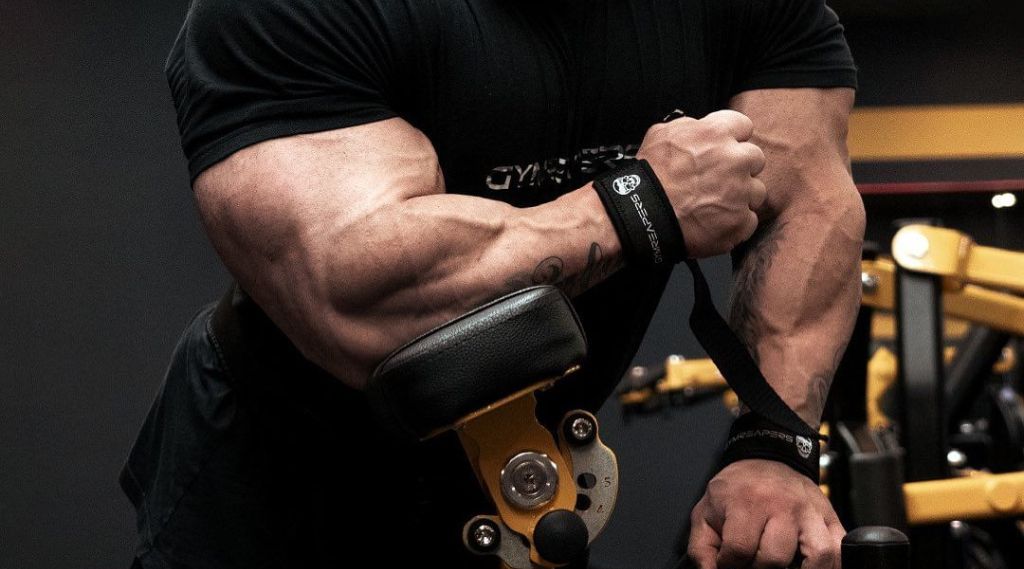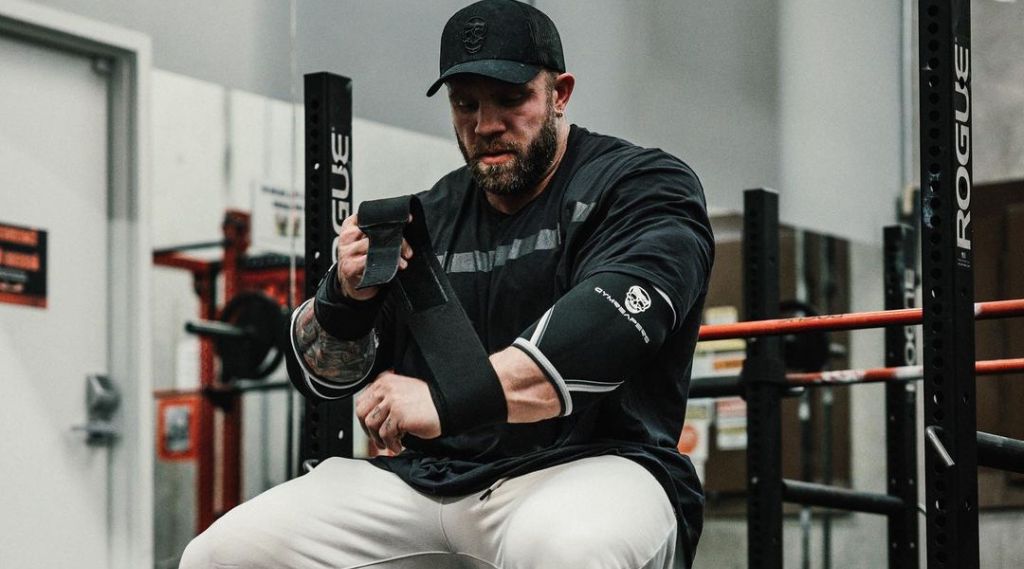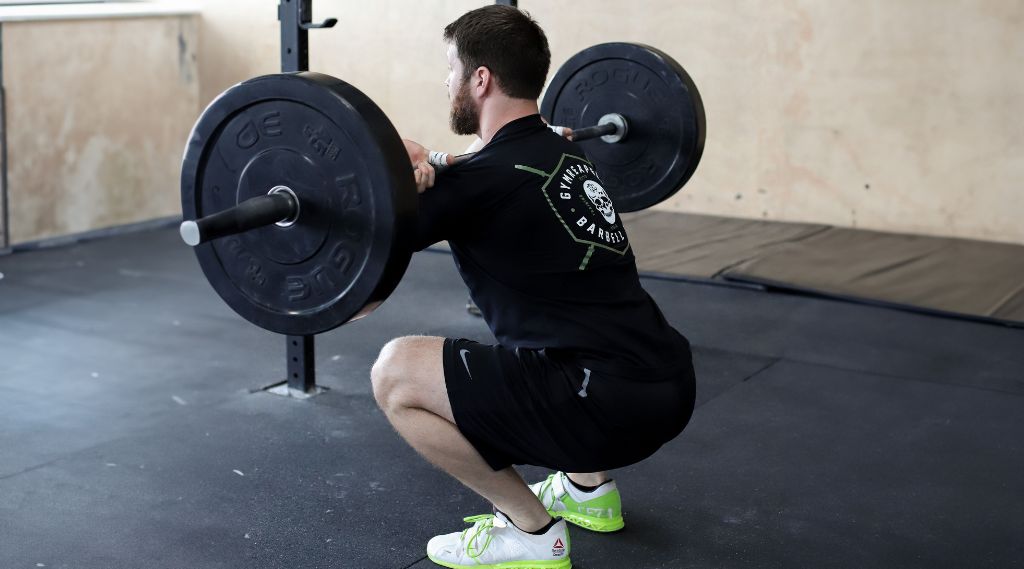If you’re getting to the point where you’re struggling to maintain your grip you’re probably wondering whether lifting straps are worth using or if you should suck it up and work on your grip.
Lifting straps help you lift more weight, encourage muscle hypertrophy, develop a better mind-muscle connection, protect your hands, improve your symmetry, and are cleaner than chalk. However, it’s easy to become over-reliant on straps and hinder your grip strength if you’re not using them appropriately.
In this article, I'll discuss the benefits and drawbacks of using lifting straps, who I think would benefit most from using them, and explain how to avoid becoming over-reliant on them.
Key Takeaways
-
Lifting straps are mainly used to help support your grip because they make it much easier to lift heavy weights for a longer period of time.
-
Lifting straps can help you develop a better mind-muscle connection and train your target muscles closer to failure to encourage hypertrophy.
- To avoid becoming over-reliant on lifting straps it’s important to practice lifting heavier weights without straps and to consider including other grip strengthening exercises.
What Are Lifting Straps?

Lifting straps, also commonly known as wrist straps, are long pieces of fabric or leather that you loop around your wrists, and then loop again around whatever you are trying to hold on to.
Lifting straps are mainly used to help support your grip, as they make it much easier to hold onto heavy weights. Because of this, people will often use them for barbell and dumbbell movements where grip is a limiting factor.
To use straps you attach them around your wrist, and then loop and cinch the extra material around whatever you are trying to lift wherever you would normally grip.
Lifting straps are great for exercises where you typically struggle to work the target muscles because your grip gives out before your target muscles do.
For example, many people will use lifting straps for things like deadlifts, shrugs, heavy rows, or even pull ups and lat pulldowns.
It’s important to note that lifting straps are not the same as wrist wraps. Wrist wraps provide a great benefit by supporting your wrists and preventing unwanted flexion, but they will not help you grip more weight.
As a powerlifter, I choose to do most of my back accessories with lifting straps. I work on my grip strength during my deadlifts without straps, so I would rather save my hands and forearms from additional strain during my accessory back movements. I also find that I can get a much better mind-muscle connection when I am not worried about my grip giving out.
5 Benefits Of Using Lifting Straps

There are 5 main benefits to using lifting straps:
1. Lift More Weight
The main benefit of straps and the key reason that most people will use them, is simply that they help you lift more weight; however, straps will only help you lift more weight if the amount of weight you can lift is limited by your grip strength.
For example, if your legs and back are strong enough to deadlift 400+lbs but your grip isn’t, then using straps can help you lift more weight. But if your legs and back aren’t strong enough to lift this much weight, then straps won’t help.
As you progress through your lifting career, the odds are very high that you will get to a level of advancement where your muscular strength has out-paced your grip capacity.
At this point, lifting straps can be a great tool to help you continue to build your strength in the gym by taking out the weakest link, your grip.
Most lifters find that they can do more weight in most exercises if they do not have to focus on holding the weight.
2. Protect Your Hands
A second major benefit to lifting straps is they can help protect your hands from calluses.
As a brief overview, calluses are essentially rough, thick patches that form over your skin in areas that are repeatedly exposed to friction. Runners will often get them on their feet from the constant pounding on the pavement, and lifters will often develop calluses from repeated gripping of barbells and dumbbells with aggressive knurling.
Calluses are a natural consequence of consistent lifting, so many people wear theirs with pride; however, the main issue with them is that they can easily rip open and expose raw and sensitive skin.
If you tear a callus, then it can take a while for your hand to heal and it will likely set you back in your training as it will be difficult to grip anything without irritating it.
Lifting straps can slow down the process of building calluses since using them will mean that your skin is no longer in direct contact with knurled metal. As such, friction will be between the strap and the bar, and your hands merely need to hold onto the strap’s leather or other fabric.
3. Symmetry
This benefit is primarily relevant for people that deadlift with a “mix-grip”, which involves gripping the bar with one hand over the bar (palm facing you) and one hand under (palm away).
While there is nothing inherently wrong or dangerous with this technique when done properly, you will develop some asymmetry over time, especially in your back and arm muscles.
One way to mitigate this asymmetry is by being intentional about switching your grip to a double overhand grip for the same number of reps that you pull with a mixed grip.
This will help keep your back development even and decrease your risk of tearing your biceps (from overuse), but it can be hard to implement because many people are more confident deadlifting with a mixed grip, and the double overhand setup likely feels much too unnatural to pull effectively.
Using lifting straps can be a great way to secure your grip while deadlifting so that you can work on any asymmetries that you have developed over time. This guarantees that you are not developing one half of your body differently than the other.
Please note that if you are a competitive powerlifter that pulls with a mixed grip, I would recommend pulling your heavier lifts (or “top sets”) with your normal grip to ensure consistency on the platform, and then using straps for all of your volume work.
4. Cleaner than Chalk

Oftentimes, when grip is your limiting factor in a lift, a natural inclination is to chalk up so that you can hold the bar more securely by reducing the amount of moisture on your hands.
This is a helpful alternative to lifting straps, but the cruel reality is that chalk is not welcome everywhere.
Many gyms don’t allow chalk because it’s messy and people often don’t clean up after themselves.
If your gym doesn’t welcome chalk, or you simply don’t feel like cleaning up your mess, then lifting straps are a great alternative. They require no extra mess and are easily transportable since they take up such little space.
5. Mind-Muscle Connection & Hypertrophy
Finally, lifting straps are a great tool for improving your mind-muscle connection and encouraging hypertrophy (muscle growth).
Research shows that hypertrophy is more likely to occur when you are training closer to failure. Training to failure means that you are unable to perform any additional reps with the proper technique. However, it can be tough to train your target muscles to failure if your grip is failing first.
By using lifting straps, you can take your grip out of the equation so that you can perform as many reps as you need to bring your target muscles close to failure.
On top of this, taking your grip out of the equation often will make the movement much more comfortable, and you can start to really focus on contracting the targeted muscle group. This is called the mind-muscle connection.
I personally love using lifting straps when I am doing pull-ups because I find that the hardest part is simply holding onto the bar, so I often rush my reps to get them done before my hands give out. When I am using straps though, I can sink into a nice, deep stretch and really focus on contracting my lats to execute a proper rep.
3 Drawbacks Of Using Lifting Straps
Although there are benefits to using straps, there are also 3 drawbacks to consider:
1. Becoming Over-Reliant
The main drawback to using lifting straps is becoming over-reliant on them and not being able to properly perform movements without them.
Over-reliance becomes apparent when you forget your straps at home and realize that you struggle to lift without them.
I never want my workout to hinge on my ability to remember all of my equipment. No matter how helpful something is, I want to be able to perform my workout effectively even if I forget something.
On top of this, over-reliance can be a killer if you compete in any strength sports.
Powerlifters, for example, cannot use lifting straps in competition. If you pull every single deadlift in the gym with straps, you may be in for a rude awakening on the platform.
This is why I recommend pulling your heaviest and most challenging sets without straps to ensure you can hold the weight, and then use straps on your backdowns and accessory movements to save your hands and forearms.
2. Weaken Your Grip
A second drawback to lifting straps is their potential to weaken your grip. This drawback is directly related to the first, as your grip will typically only weaken if you become over-reliant.
While it is very cool that lifting straps remove the stress on your hands and your grip, which can help you lift heavier and for longer, you still want to watch out for the gradual weakening of your grip.
Grip strength, like any strength, is built up by repeated stress over time. Without stressing your grip and challenging yourself, you won’t build up any strength.
If you become over-reliant on your straps and have built up your other muscles much more than your hands and forearms, you will find yourself in a very tough position.
To remedy this disadvantage, try and perform at least a few challenging sets of your exercises without straps before putting them on. If you have done this, and the main focus of your training is on hypertrophy and not lifting on a platform, then feel free to throw on your straps.
On top of this, you can do grip-specific work. Here are some easy ways to improve your grip:
- Practice heavy barbell holds for 30 seconds at a time
- Use a grip-strengthening tool
- Use a stress ball at work
- Practice hanging from a bar
- Use Fat Gripz
3. Dangerous for Overhead Movements
A final drawback to lifting straps is that they are very dangerous, and not very useful, for overhead movements.
Lifting straps secure your wrist to the barbell to help keep your grip secure, which is an awesome benefit but you do need to be careful.
Olympic lifting movements like the snatch, clean and jerk, and other overhead workouts are better done without straps.
Although it’s possible to lose your grip while performing these movements, it would be safer to let the bar go than to have your grip secured with straps and not be able to let go when you need to.
For example, if you’re performing a snatch and you pull the bar too hard and it goes behind you then you won’t be able to let go of the bar and you will either fall backward or severely injure your shoulders.
Experienced lifters may decide to use lifting straps during these movements, but it’s important to be aware of the risk it poses if something goes wrong.
Who Should Be Using Lifting Straps?

Those who would benefit most from lifting straps are:
Bodybuilders
Any serious lifter who is training for hypertrophy should have a pair of lifting straps in their gym bag.
When you are advanced enough that your musculature has outpaced your grip, lifting straps will be a great tool for you to still get effective training that is not limited by your grip.
A simple rule of thumb to ask yourself is what are your training goals for that day. Ask yourself what your target muscle is for that exercise, and then ask yourself what muscles fatigue first when you do the exercise.
If you are trying to work your back and biceps that day, but your hands and forearms give out first, you should be using lifting straps.
Hook Grip Lifters
Lifting straps are a great tool for hook-grip deadlifters, and in my opinion, all of them should utilize straps in their training.
Hook grip is a technique that many powerlifters and Olympic weightlifters like to use to ensure maximum grip strength and efficiency.
Essentially, this technique is used when lifters pin their thumb in between the bar and their other fingers. While very painful, this is a very secure grip that turns a lifter’s hand into a hook around the bar. It also gives most lifters a more efficient pull than mixed grip and removes the risk of asymmetry.
While hook grip is very useful, it is not sustainable to use throughout your entire training session because it is very painful, and the skin on your thumb often tears from the knurling on the bar.
Because of this, it is very helpful for hook-grip lifters to make use of straps in their training. I recommend all hook-grip lifters pull their warmup and back-down sets with straps. This then saves the actual hook grip for heavier singles that mimic how a lift will feel in competition.
Strongman Competitors
A final group of people that should definitely use straps is strongman athletes.
The sport of strongman permits the use of straps in all competitions, so it makes sense to use them.
They are incredibly helpful for any events that mimic a deadlift and are great for gripping an axle bar, which is much thicker than a regular barbell.
Who Should NOT Be Using Lifting Straps?
Those who would not benefit (as much) from straps are:
Competitive Powerlifters
I would not recommend lifting straps for competitive powerlifters, to a certain extent.
If you can perform your heaviest with only your bare hands and chalk consistently without any grip issues, then there is no reason that you couldn’t use straps for your rep work or accessories.
However, if you struggle to lift heavier weights without your grip giving out then you should not be using straps as a competitive powerlifter.
If you can’t lift heavy weights in training without losing your grip, then you definitely won’t be able to lift those weights on the platform when it matters most.
People Who Want Stronger Hands
Lastly, I don’t recommend lifting straps for those who are focused on building stronger hands, forearms, and grip strength.
If this is you, you should likely stay away from lifting straps and try to do every exercise solely by relying on your grip strength.
Lifting Straps Recommendation

The standard Gymreapers lifting straps are one of your best options for helping you lift more weight, build bigger muscles, and keep your hands safe.
These straps are made from durable cotton, which provides padding between your hands and the weight. The fabric is also lined with neoprene where the strap meets your wrist, which prevents the material from digging into your skin.
Each strap is 18” long, so you have plenty of fabric to loop over the external weight to tighten securely for a safer and more comfortable training experience.
These straps are great for general lifters; however, here are some further recommendations if your needs are more specific:
- Gymreapers Figure 8 lifting straps are incredibly tough, and durable, and are ideal for strongmen and powerlifters. They can be used on axle bars, deadlift bars, regular barbells, or any type of machine or dumbbell.

- Gymreapers Lifting Grips are more expensive than traditional straps, but they are perfect for heavy pulling workouts for people focused on hypertrophy gains.












Hinterlasse einen Kommentar
Alle Kommentare werden vor der Veröffentlichung geprüft.
Diese Website ist durch hCaptcha geschützt und es gelten die allgemeinen Geschäftsbedingungen und Datenschutzbestimmungen von hCaptcha.